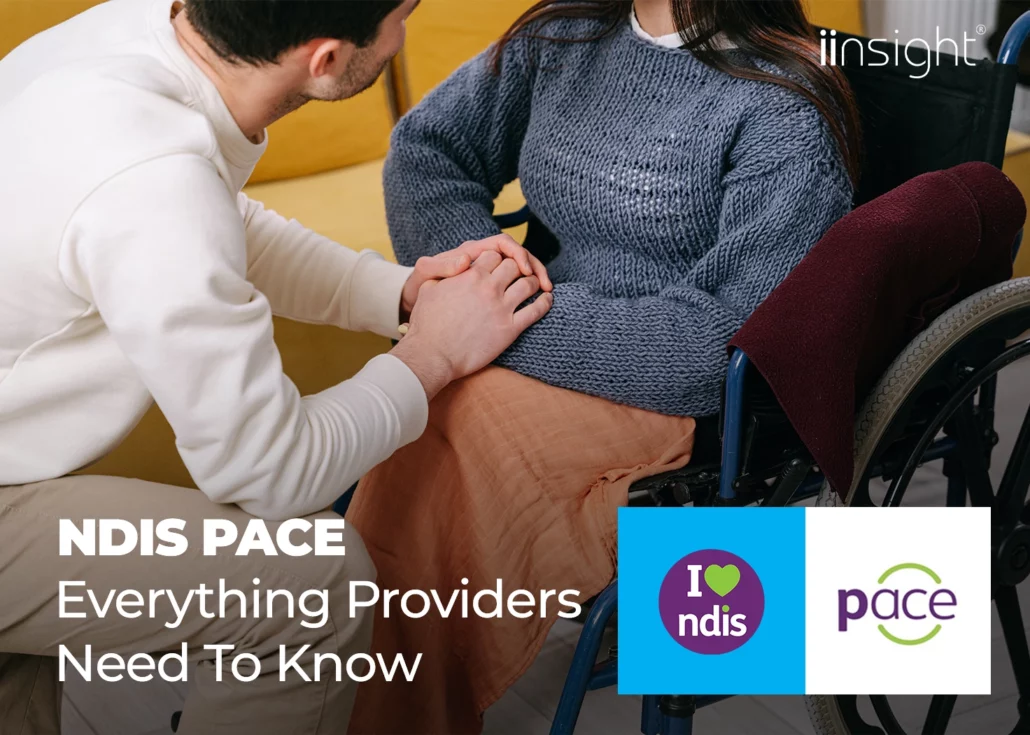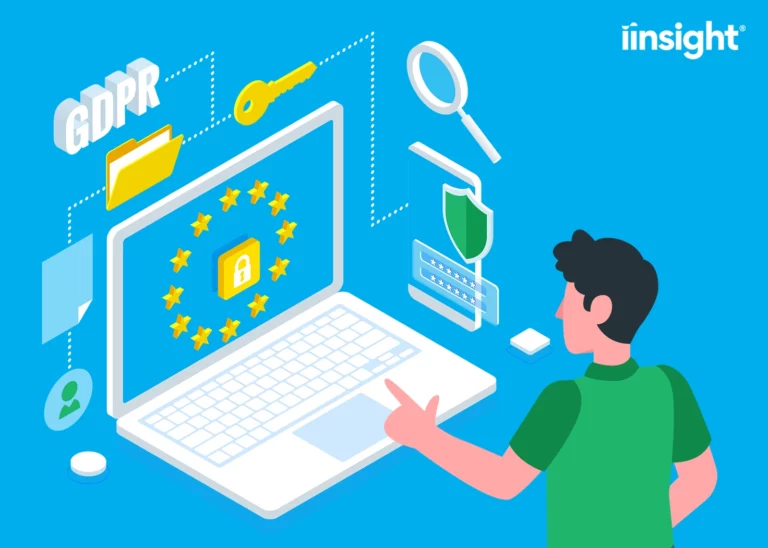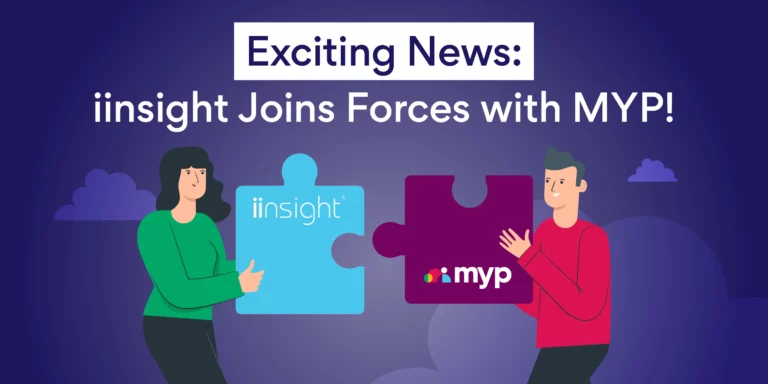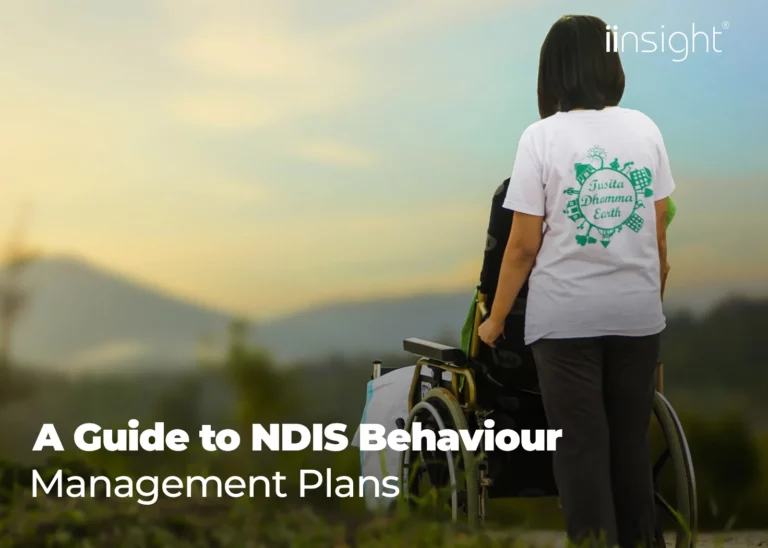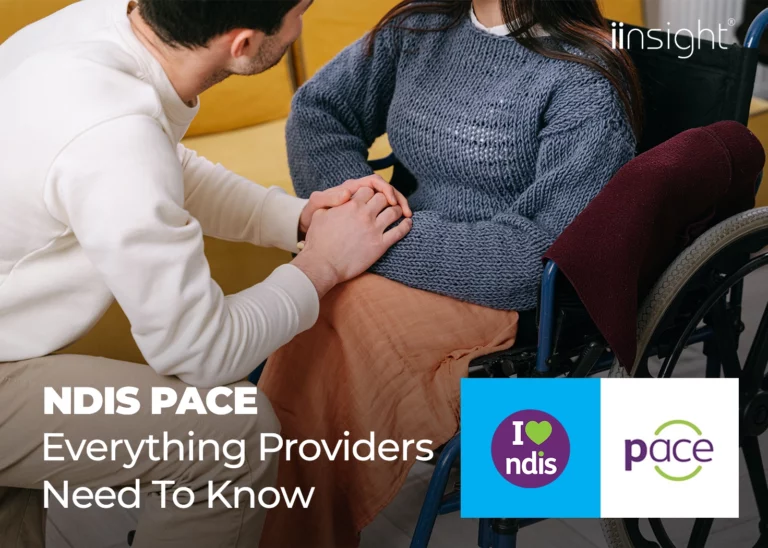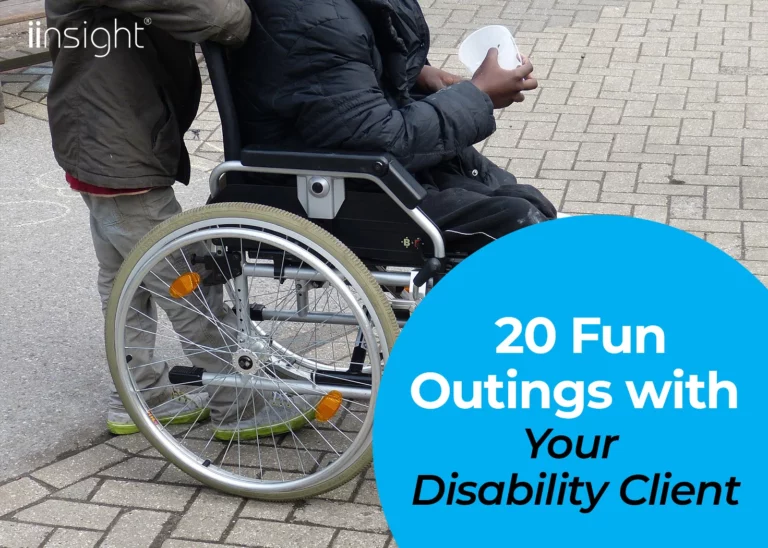The new computer system from NDIS, PACE, is being rolled out to providers across Australia. This new system will affect how providers carry out a number of tasks and report information, primarily billing. PACE is being implemented together with the new My NDIS Provider Portal, with both designed to be more user-friendly to make it easier for NDIA staff, partners, and providers to do their jobs. As a provider, there are some key things to know to help you adopt this new software. NDIS has delivered information sessions to help providers understand some of the key things they need to know. Whether you attended one or not, it’s useful to have a written guide of what you should know about the system.
PACE was first tested in Tasmania and began rolling out across the rest of Australia in October 2023, with an expected completion date of February 2024.
What Is PACE?
PACE (Provider and Participant Digital Access to Core Supports) is the new customer relationship management system from the NDIA. The new software is intended to help make the payment process faster and create a better experience for providers and participants. The new system should help providers save time so that they can focus more on delivering their core services.
PACE doesn’t change anything about the way the NDIS operates for providers but is intended to deliver a number of benefits. The user-friendly payment enquiry system and changes to billing will be the most significant things for many providers to pay attention to. The new portal and tools will allow for an easier exchange of information.
What Are the Main Changes with PACE?
PACE will be changing a number of things for NDIS providers. These changes should provide benefits to providers, helping to make many things smoother. Here are some of the key ways the PACE software will make a difference.
New Portal
As well as introducing PACE, PRODA will be replaced by the My NDIS Provider Portal. This is to help improve communication between providers and participants. Participants are able to nominate someone as their provider, which means that information sharing between them can be more efficient and streamlined. Providers also have access to more information about providers and their plans, including their budgets.
Changes to Support Categories
A new type of support, Recurring, has been added to the support catalogue. Five support categories have also been renamed to make them clearer. For example, Support Coordination is now Support Coordination and Psychosocial Recovery. Other categories have changed to Relationships, Health and Wellbeing, Lifelong Learning, and Choice and Control.
New support categories have also been added. These are Home and Living, Behaviour Support, Assistive Technology Repairs and Rental, Specialist Disability Accommodation, Specialist Disability Young People Living in Residential Aged Care (YPIRAC) – Cross Billing, and Transport Recurring. These changes are a regrouping of existing support services to help clarify services and funding.
Billing and Payments
One of the major ways the introduction of PACE affects NDIS providers is through changes to billing practices. PACE changes how providers bill for the services they provide thanks to the new payment system.
The billing system is designed to work faster, with validated claims processed within two or three days. Providers can only claim in bulk for improved efficiency.
Compliance and Managing Processes
With PACE, support bookings are no longer required. Additionally, longer plan durations will be normalised. The software also has functionality in place for perpetual plans, although the feature hasn’t been enabled yet. Plan implementation and monitoring are prioritised too, including when it comes to NDIS check-ins with participants.

How Does PACE Benefit NDIS Providers?
Switching to new tools can be difficult, and you may wonder whether using PACE is going to benefit you as a provider. PACE has been designed to improve things for providers and participants, so you should see some benefits from implementing the new system. You should be able to use PACE with many other existing tools too.
Greater efficiency
PACE should help NDIS providers to be more efficient. The system offers automation and integration with other tools, which should reduce the number of manual tasks providers have to complete. As a result, providers will have more time for other essential tasks. They can work on delivering the best care to participants instead of doing paperwork or menial tasks.
Streamlined processes will help to prevent delays and make financial management easier for providers.
Better transparency
Improved transparency is another key benefit of the PACE software. Both providers and participants have the latest information that is relevant to them. This greater transparency helps to create trust and better communication between all parties.
Empowering participants
PACE will help to encourage participant engagement by giving them more control over their plans and services. They will have the ability to engage more in their NDIS journey and make choices about the services they receive with the information they need to help them.
Adapting to changes
PACE is designed to offer adaptability and flexibility to providers. This allows them to quickly make changes to services or plans, or respond to the needs and requests of participants when necessary.
Where to Get Important Information and Updates
There are various resources you can use to get all of the information you require on PACE and how it affects you. The NDIA has been running information sessions that you can attend to get all of the information you need about important changes. You can check events on the NDIS website to find the latest dates for information sessions.
You can find updates about the My NDIS Provider Portal and PACE on the NDIS website too. There is currently information about what is planned for March 2024, including developments for the portal and app. You can also visit this page, which provides more information about the rollout. Although the original aim was for the rollout to be completed in February 2024, the latest information says it will take up to 18 months. By February, they aim to have over half of NDIS plans approved each month on the new computer system.
There are videos, tools, and resources you can use to prepare. You can call the National Contact Centre on 1800 800 110 or email provider.support@ndis.gov.au if you’re looking for support relating to the new computer system. This contact information can also be used to provide feedback on how the system is working and make suggestions on how it can be improved.
Informational videos on YouTube are available too, although some information predates the beginning of the new system’s rollout. It’s important to check that you are getting the most up-to-date information when you research what steps you need to take.
What Happens During the Rollout?
As PACE and the new portal are being rolled out, the NDIA is keeping providers up to date with what’s happening. Claims should continue to be submitted via the myplace provider portal, regardless of whether the participant’s plan is in the old or new computer system. From the end of February, all expiring NDIS plans will progressively transition to the new computer system. The FAQ section on the NDIS website provides information on how providers can determine which system a participant’s plan is on.
The timeline of the rollout is as follows:
- From 31st October 2023 – new participants have their plans created in PACE
- From 31st October 2023 – existing participants with changes will have their plans reassessed in PACE
- Between November 2023 and February 2024 – plans due to expire, either a new plan will be created in PACE (if changes are required) or a rollover will be used, with transition to PACE once the rollover period ends
- After February 2024 – all expiring plans will progressively transition to PACE and My NDIS Provider Portal
All existing providers can access the My NDIS Provider Portal through their PRODA account. This provides the opportunity to familiarise yourself with the system before you begin to use it. Information about how to use the portal can be found here. The provider learning environment can be used to learn the ins and outs of the portal.
Next Steps
If you’re an NDIS provider, your next step should be to ensure you’re informed about PACE if you’re not already using it. Make use of the NDIS information sessions if you can, as they will provide you with information straight from the most reliable source. Unregistered support coordinators and psychosocial recovery coaches should be particularly careful to prepare for the rollout of PACE. You will need a PRODA account to support participants once their plan is transitioned to PACE. Set up your account as soon as you can so that you can gain access to the new portal and support participants in the right way.
Make the transition to PACE as easy as possible by integrating with iinsight. Our case management software enables you to manage your practice with ease, while reporting all relevant information using PACE. Book a demo today to find out more about how iinsight can work for your practice.

